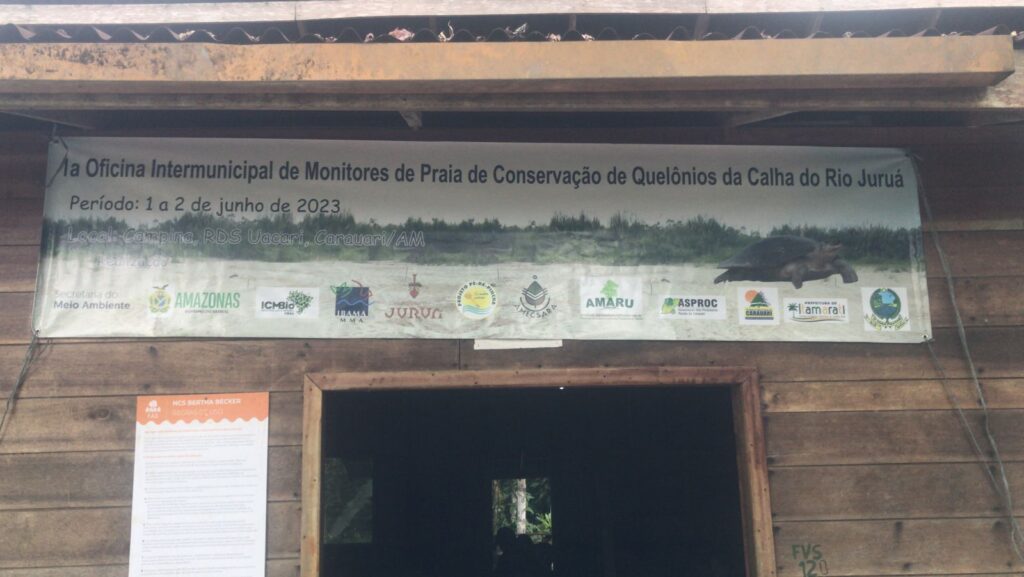For the first time, monitors from three municipalities on the Juruá River come together to exchange experience and advance in conservation protocols.
By Karina Pinheiro and Clara Machado

The Intermunicipal Workshop of Beach Monitors for the Conservation of Chelonians at The Juruá Riverbed took place on June 1st and 2nd, at the Campina base, in the Uacari Sustainable Development Reserve.
Organized by the State Secretary of the Environment (SEMA) and Chico Mendes Institute for Biodiversity Conservation (ICMBio), with support from the project Pé-de-pincha, the goal of the workshop was to promote the conservation of nesting beaches for chelonians, known as “nesting ground”. In the Mid-Juruá there are 19 protected nesting grounds within conservation units.

The monitors’ meeting is an annual event to share data on beach conservation activities and draw up strategies together. However, this year, for the first time, the meeting was integrated by the municipalities of Itamarati, Juruá and Carauari.
The meeting of monitors from the three municipalities provided an unprecedented exchange of experiences, where representatives of each nesting ground reported the main achievements, challenges and needs, integrating the different realities along the river.
The event also featured presentations by institutional partners such as SEMA, ICMBio, IBAMA, Pé-de-pincha Project, Association of Residents of the Uacari Sustainable Development Reserve (AMARU), and Instituto Juruá.
“Our main contribution as an institute is to improve working conditions and dignify the beach monitors”, says Eduardo Von Mühlen, the coordinator of Conservation Practices at Instituto Juruá.
During the workshop, Eduardo Mühlen presented the proposal for a global collective fundraising campaign to raise funds to be invested in conservation work on turtle nesting beaches. The amount collected in the future campaign will be directed to investments in the infrastructure of the beaches to house the monitors and in decent remuneration for this work, guaranteeing the safety of the monitors and their families during the months that the beaches need protection.
“The idea is to work with the collective campaign with the other partners so that in the future this work can be remunerated and that people can have better working conditions and a decent wage”, adds Eduardo.
The intention is for the intermunicipal meeting to be held regularly. “It was wonderful to see everyone integrated and see all the effort of protecting the nesting beaches on a large scale, and we were able to establish a data collection protocol that brings together these different realities in the three municipalities”, concludes Eduardo.
The event had the support and participation of the Residents Association of the Uacari Sustainable Development Reserve (AMARU), Residents Association of the São Raimundo Community (AMECSARA), Association of Rural Producers of Carauari (ASPROC), and the municipalities of Carauari, Itamarati and Juruá.